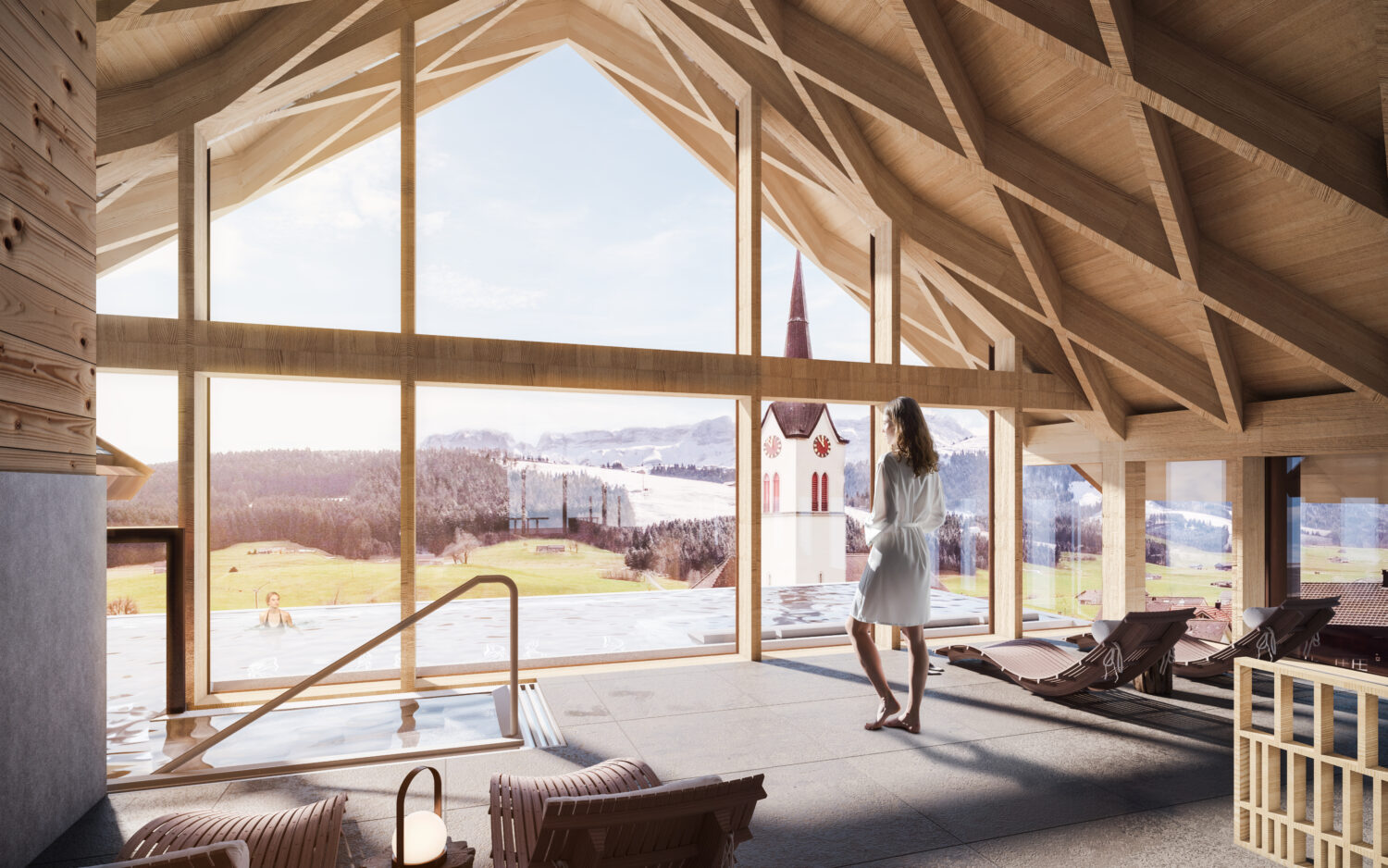
By Adam Mogelonsky
The word ‘optimization’ in today’s world implies the use of data and metrics for continuous business improvement, but it also implies making tradeoffs and devoting limited resources to certain goals ahead of others. For today’s hospitality world, we are confronted by so many data points, so many partners or siloed interests and so many different activities vying for our attention or capital. To make informed, strategic decisions that will unify various operations towards a common objective, hoteliers and owners must carefully pick the key performance indicators (KPIs) that they will optimize and prioritize.
What KPIs should a hotel focus on improving? This pursuit of optimization only gets more complex with the more operations we add – profit centers such as a wellness center that are very often necessary to drive occupancy as well as diversify away from a purely heads-in-beds model – making business intelligence (BI) and machine learning (ML) instrumental to making sense of it all.
In anticipation for his keynote appearance at Forum Hotel&Spa on May 30th in Paris, I had the opportunity to sit down with Hans-Peter Veit, Director of Spa & Recreation at Appenzeller Huus Gonten in Switzerland, where we discussed why length of stay (LOS) should be the foremost KPI to optimize for whenever a hotel leader or brand is considering the substantial capex requirements for new wellness assets at their properties.
A Distinguished Spa Career in Focus
To frame the justification for LOS above the numerous other metrics that hotels can track, it’s important to first remark on Veit’s career in luxury hospitality to see how he arrived at this KPI as the holistic marker of property growth.
Veit started his hotel career as a personal trainer in 1999 at Brenners Park-Hotel & Spa, a historic, five-star wellness-focused property in Baden-Baden dating back to 1834 that’s also the first property in the celebrated Oetker Collection. After two years, he moved into spa management, staying at Brenners Park for over 17 years. (As an aside for those unfamiliar with this region, Baden-Baden has been renowned for its healing thermal waters since Roman times, with accounts surviving of Emperor Carcalla visiting the bathes in the early third century to cure his arthritis.)
In mid-2009, Veit took on a larger role for the Oetker Collection, acting as the Director of Spa Development for seven years where he helped manage new resort spa constructions as well as the design of multi-night wellness packages and a variety of onsite programs to meet guest needs. Thereafter, he was the Director of Spa at Victoria-Jungfrau Grand Hotel & Spa in Interlaken for over four years and the Director of Spa & Wellbeing at Grand Resort Bad Ragaz for over three years before joining Appenzeller Huus in Gonten in January of this year.
Observations from Luxury Hotel Management
Taken together, these properties represent the pinnacle of the destination spa world, with time-honored wellness brands that must be upheld through meticulous attention to the available programming and through periodic renovations to ensure lasting quality befitting their prestige. These are hotels that often host the same single occupants, couples, families and groups each year, with guests returning annually because they are treated special and their detailed preferences are remembered.
This level of anticipatory service is only possible when teams remain intact – a clear incentive to prioritize your employees. But the knock-on effect of incredible service is that you have reduced customer acquisition costs because a sizable proportion of your guests are returning and booking direct. Moreover, these returning guests have on average a longer LOS and spend more on ancillaries to increase total revenue per guest (TRevPAR). Given the higher relative costs of operationalizing check-ins and check-outs, increasing LOS in this way is both a reflection of higher topline throughout as well as a cost-cutting measure.
From his tenure at these luxury brands, Veit has many other keen observations on the operational challenges for five-star hotel spas that others may miss, especially those that relate to the human side of wellness service delivery and the personal touch of a caring, devoted and energized spa practitioner.
“When it comes to delivering five-star wellness experiences, everyone at the hotel is as important as the next, from the general manager right down to the receptionist and masseuse,” remarked Veit. “All spa team members need time to recharge in order to deliver their best performance and not just average service. For instance, when you allow for too many bookings in the evening, your practitioner may be fatigued by then and won’t be able to give a treatment that’s reflective of true luxury quality. So, even though the demand may be there for those late-hour appointments, you have to restrict availability in order to preserve both the guest experience and team morale.”
This example highlights a tradeoff that only a true wellness veteran would be able to navigate. By optimizing for the highest quality of spa service, the push for maximizing short-term revenues may be sacrificed, but the long-term benefit is that guests remember how the staff treated them, and then become loyalty patrons for years to come, serving this LOS-driven objective.
After all, where else but the spa do guests and hotel teams spend so much time interacting? This is a unique quality of a wellness facility versus other onsite touchpoints like the front desk or the restaurant that’s often overlooked and difficult to directly quantity. It’s this emotional, human connection that results in more return visits, more word of mouth and, ultimately, improvements to all the other metrics that give a full-service property resiliency, with positive changes in ADR, TRevPAR, LOS, direct booking rates, lead times and pace by room type.
Guiding an Enormous Resort Development
While appenzeller cheese is world-renowned, the canton of Appenzell Innerhoden, much like many other places nestled in vast mountain greenscapes of Switzerland, has quietly gained a devoted following as a wellness destination. The growth of wellness tourism to the country and to this particular district – along with other recent examples of success such as The Chedi Andermatt which first opened in December 2013 – became the impetus for Veit’s current role helping oversee the Appenzeller Huus Gonten’s low nine-figure expansion project, turning the currently 25-room hotel into its own quintessentially Swiss alpine spa village.
The development will include the construction of 80 hotel keys and 42 branded residences spread across a campus of low-rise buildings that each have their own spa amenities and are connected by underground tunnels for access to the primary medi-spa facility. The hotel units will be divided amongst three-star, four-star and five-star offerings – with certain amenities and facilities exclusive to the luxury customers – while the residences will be operated as serviced apartments with most already presold. Importantly, throughout this entire process, trees will obscure lines of sight with the construction as certain buildings and units are certified as ready for occupancy.
With the spa facilities designed by GOCO Hospitality, the vision was to design a pure Swiss experience, integrating nature wherever possible and even going so far as to use only the original wood from nearby cabins that date back as early as 1602. To build on Veit’s understanding of the importance of keeping teams happy in order to generate return visits and increase LOS, budgeted into this construction is wohngemeinschaft, from the German for ‘shared apartment’, although this direct translation doesn’t really capture the sense of community inferred by this compound word.
As this outlook relates to Appenzeller Huus Gonten, staffing accommodations are not an afterthought in this development but are central to the planning of attracting top talent to this rural destination. As these employee buildings represent a huge upfront expense in addition to the buildout of a world-class medi-spa, other developers may have opted for minimizing this line item because it doesn’t have a direct relationship with returns. And yet, their construction is entirely necessary in order to reflect long-term property health through such metrics as low employee turnover then above-benchmark LOS which as we’ve shown is the final result of anticipatory service.
What Makes a Medi-Spa
For these shared apartments and with many other intangibles of hospitality capex, Veit and his team have always recognized that the specialized staff required to curate the high-touch and high-tech experiences of a medi-spa all have families and may not be prepared to immediately relocate to Appenzell. Staff buildings with communal kitchens and their own high-end amenities thus become integral to nurturing team bonds and keeping employees for the long-term to enable smooth, efficient operations or so that guests can remain loyal by returning year after year to see the same practitioners.
But what exactly is so specialized about a modern wellness center? In order to drive LOS, of course, guests want great service, but they also need a strong ‘reason to visit’.
At Appenzeller Huus Gonten, that reason to visit will be an illustrious, three-story wellness facility with the latest in contrast therapy such as infrared saunas, hyperbaric oxygen tanks and cryochambers, alongside an array of clinicians to administer these treatments as well as physiotherapists and other movement specialists. Part of the design will be to present these experiences in an inviting, non-sterile setting that incorporates natural elements appropriate for the Swiss countryside, and with a bucket list rooftop pool offering awe-inspiring panoramas of the mountains.
Between the clinical staff and state-of-the-art machinery, as well as the lavish fittings, fixings and furnishings, none of this comes cheap. As Veit remarked, he is willing to show a loss on the spa ledger in order to drive room reservations and LOS – the hotel ledger which has the largest margins. After all, it is the wellness facility that will be the main draw for guests to book in the first place, to stay longer and to pay a premium for access to the amenities. In other words, hotel occupancies are being optimized ahead of positive cash flows in the spa, knowing that the latter entity drives business for the former.
“Full service hotels cannot think in terms of siloes anymore,” added Veit. “Spas should not think only about maximizing profitability within their own operation because this may not best serve the long-term interests of high-paying, loyal hotel guests. Likewise, hotel managers must think about what experiences they are offering in order to build that loyalty and convince guests to stay longer during each visit. This programming and reason to visit comes with a cost, but ensures business longevity, and there’s no better way to boost LOS than through wellness.”
To conclude our chat, Veit offered one other German word, one that even the famed Swiss hotelier César Ritz used to guide his service approach: ehrlichkeit or ‘sincerity’. All senior executives and leaders must be honest and upfront with their vision and plans so that they can act in harmony to achieve those lofty goals and build a brand that lasts. Unifying around LOS as a KPI is one foremost way to ensure that everyone from the owner down to the front desk clerk are doing their part to best serve the business.


